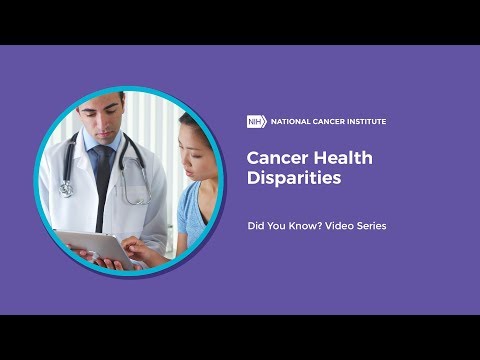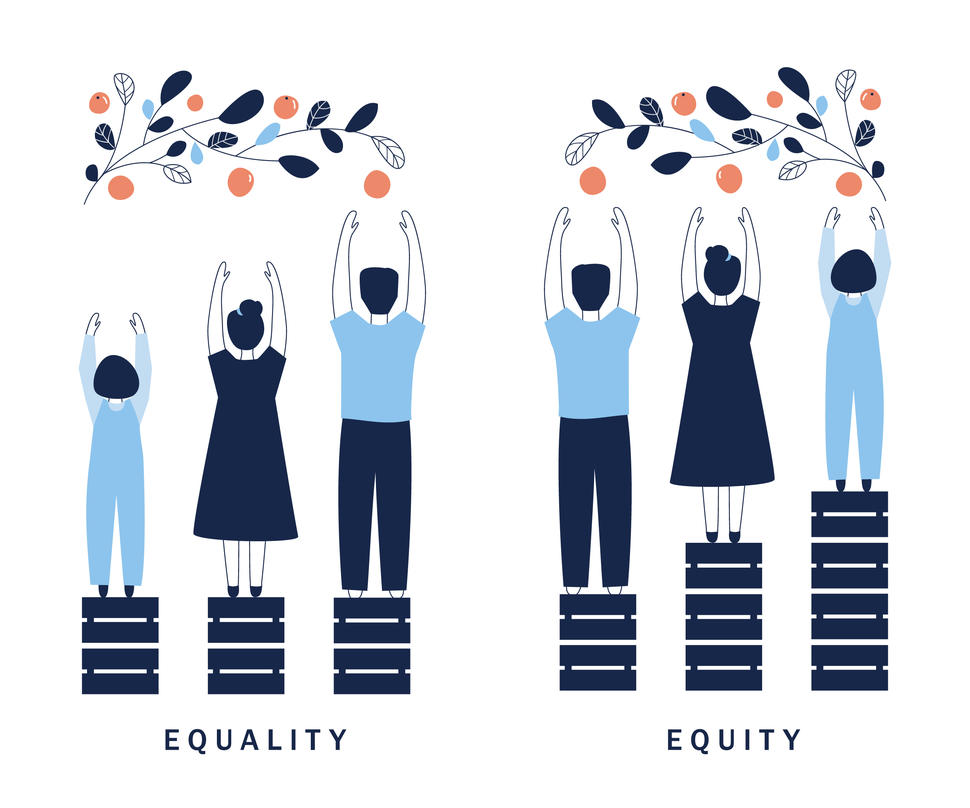Does Theamerican Cancer Society Do A Background Check
Cancer affects all population groups in the United States, simply due to social, environmental, and economic disadvantages, certain groups deport a disproportionate burden of cancer compared with other groups.
Cancer disparities (sometimes called cancer health disparities) are differences in cancer measures such as:
Cancer disparities tin can also be seen when outcomes are improving overall but the improvements are not seen in some groups relative to other groups.
Population groups that may experience cancer disparities include groups divers by race/ethnicity, disability, gender identity, geographic location, income, education, age, sexual orientation, national origin, and/or other characteristics.
Examples of Cancer Disparities
Although cancer incidence and bloodshed overall are declining in all population groups in the United States, certain groups continue to be at increased take a chance of developing or dying from particular cancers.
Statistics from NCI's Surveillance, Epidemiology, and End Results Program include information specific to racial and ethnic populations also as populations defined past age, gender, and geography. Some key cancer incidence and bloodshed disparities in the United States include:
- Blacks/African Americans have college death rates than all other racial/ethnic groups for many, although not all, cancer types.
- Despite having similar rates of breast cancer, Blackness/African-American women are more probable than White women to dice of the disease.
- The incidence rates of colorectal, lung, and cervical cancers are much higher in rural Appalachia than in urban areas in the region.
- Although deaths from prostate cancer take dropped substantially in contempo decades among all men, Black/African-American men are twice as likely as White men to die of prostate cancer and keep to have the highest prostate cancer mortality among all United states of america population groups.
- People with more educational activity are less probable to dice prematurely (before the age of 65) from colorectal cancer than those with less teaching, regardless of race or ethnicity.
- Hispanic/Latino and Black/African-American women accept higher rates of cervical cancer than women of other racial/ethnic groups, with Blackness/African-American women having the highest rates of expiry from the disease.
- American Indians/Alaska Natives accept college decease rates from kidney cancer than any other racial/ethnic group.
- The rates of smoking and booze drinking, which increase cancer risk, are higher among lesbian, gay, and bisexual youths than among heterosexual youths.
- American Indians/Alaska Natives have the highest rates of liver and intrahepatic bile duct cancer, followed by Hispanics/Latinos and Asians/Pacific Islanders.
Contributing Factors
Social Determinants of Health
The Department of Health and Human Services defines social determinants of health as the conditions in the environments where people are born, live, learn, work, play, worship, and historic period that affect health, functioning, and quality of life.
Cancer disparities reverberate the interplay among many factors, including social determinants of health, behavior, biological science, and genetics—all of which tin have profound effects on health, including cancer take chances and outcomes.
Certain groups in the United States experience cancer disparities because they are more likely to encounter obstacles in getting health care.
For example, people with low incomes, depression health literacy, long travel distances to screening sites, or who lack wellness insurance, transportation to a medical facility, or paid medical go out are less likely to have recommended cancer screening tests and to be treated co-ordinate to guidelines than those who don't encounter these obstacles.
People who exercise not take reliable access to health care are also more likely to be diagnosed with late-stage cancer that might have been treated more than finer if diagnosed at an before stage.
Some groups are disproportionately afflicted by cancer due to environmental conditions. People who alive in communities that lack clean h2o or air may be exposed to cancer-causing substances.
The congenital environment tin can also influence behaviors that raise ane'south risk of cancer. For example, people who live in neighborhoods that lack affordable healthy foods or safe areas for exercise are more than probable to have poor diets, be physically inactive, and obese, all of which are risk factors for cancer.
Even people of higher socioeconomic status and those with health insurance may feel cancer disparities. The disparities these individuals feel may reflect the health impact of institutional racism and the chronic stress information technology causes, conscious or unconscious bias from wellness providers, mistrust of the health care organization, and/or fatalistic attitudes most cancer.
In some cases, inherited factors or tumor biological factors may, either directly or by interacting with factors such equally nutrition, chronic stress, or tobacco exposure, atomic number 82 to cancer disparities.
Health Equity
According to the Centers for Disease Control and Prevention, health equity is achieved when every person has the opportunity to attain his or her full wellness potential and no one is disadvantaged from achieving this potential considering of social position or other socially adamant circumstances.
For case, some evidence suggests that there are differences in the genetics, tumor biology, and immune environment of triple-negative breast, colorectal, and prostate cancers that arise in African Americans compared with those that arise in people of other racial/ethnic groups. These differences may contribute to disparities in incidence, aggressiveness, and response to treatment of these cancers.
Cancer disparities may as well be exacerbated past the lack of multifariousness in clinical enquiry participation. Because of this lack of multifariousness, research results may non exist applicative to all populations.
Because many different factors can influence cancer disparities, addressing them is not always unproblematic or straightforward. Reducing or eliminating some cancer disparities in the pursuit of health disinterestedness will require policy changes to overcome systemic social, racial, and/or institutional inequalities.
NCI-funded researchers are working to identify other ways to better outcomes for groups disproportionately affected by cancer. Their research efforts range in scope from designing and implementing culturally appropriate health interventions, to improving access to care and clinical trials, to examining genetic factors that may explain differences in rates of aggressive cancers.
Learn virtually cancer wellness disparities research and NCI's efforts to stop structural racism in biomedical inquiry.
Does Theamerican Cancer Society Do A Background Check,
Source: https://www.cancer.gov/about-cancer/understanding/disparities
Posted by: harmonhareand.blogspot.com




0 Response to "Does Theamerican Cancer Society Do A Background Check"
Post a Comment